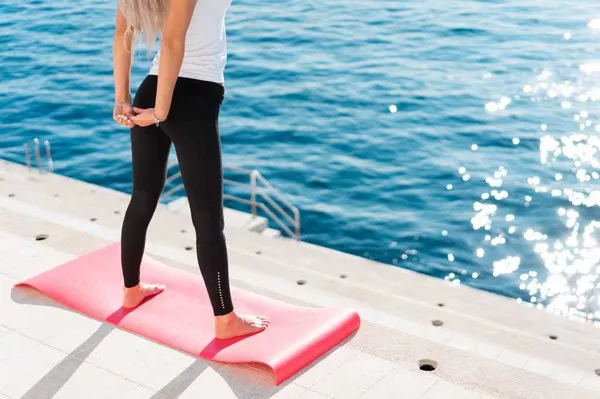In the quest for a slimmer, healthier physique, shedding that stubborn belly fat ranks high on the priority list for many. It’s no secret that a trim waistline not only boosts self-confidence but also has significant health benefits. While countless fad diets and exercise routines promise quick fixes, it’s crucial to find a sustainable and effective solution. One such solution that often flies under the radar is the simple act of walking. In this comprehensive guide, we delve into the question: “Is walking good for losing belly fat?” Let’s explore the science behind it, the best practices, and tips for maximizing the effectiveness of your walking routine.
Why Walking Is Effective for Belly Fat Loss:
Targeted Fat Reduction:
When it comes to losing weight and fat, the general rule is that you need to create a calorie deficit. Walking is an excellent way to burn calories, but what makes it particularly effective for targeting belly fat is that it encourages your body to utilize stored fat for energy. Studies have shown that moderate-intensity walking engages abdominal fat cells, reducing visceral fat, the type of fat that accumulates around the internal organs and is often associated with various health issues.
Steady and Sustainable:
Unlike more intense workouts that can lead to burnout and injuries, walking is a low-impact, sustainable exercise. This means you can maintain your walking routine for more extended periods, increasing the overall calorie deficit and maximizing fat loss. It’s an ideal choice for individuals of all fitness levels, from beginners to advanced.
Enhanced Metabolism:
Consistent walking, especially when incorporated into your daily routine, can boost your metabolic rate. As your metabolism accelerates, your body becomes more efficient at burning calories, even during periods of rest. This metabolic boost is a key component in long-term belly fat reduction.
Optimizing Your Walking Routine for Belly Fat Loss:
Duration and Frequency:
To see tangible results, aim for at least 150 minutes of moderate-intensity walking per week. This equates to around 30 minutes of walking most days of the week. You can break this time into shorter sessions, like 10-15 minutes, to fit your schedule.
Speed Matters:
While leisurely strolls are beneficial for overall well-being, to target belly fat effectively, you should increase your walking pace. Aim for a brisk walk where you can maintain a conversation but still feel your heart rate rise. This intensity ensures you burn more calories during your walks.
Incorporate Hills and Intervals:
To add variety and challenge to your walking routine, find routes with inclines or add short bursts of faster walking. These changes in terrain and pace can further elevate your calorie burn and promote muscle engagement.
Proper Posture:
Maintaining correct posture while walking is essential. Keep your head up, shoulders back, and engage your core muscles as you walk. This will help you burn more calories, improve your balance, and tone your abdominal muscles.
Nutrition and Diet Tips for Belly Fat Reduction:
Balanced Diet:
Walking alone won’t bring about significant results if your diet is filled with processed, high-calorie foods. A balanced diet rich in fruits, vegetables, lean protein, and whole grains is essential to complement your walking routine.
Hydration:
Staying well-hydrated is crucial for overall health and can support your weight loss goals. Drinking water before, during, and after your walks can also help control your appetite.
Mindful Eating:
Pay attention to portion sizes and practice mindful eating. Avoid eating in front of the TV or computer, as this can lead to overeating. Chew your food slowly and savor each bite.
Tracking Progress and Staying Motivated:
Use Technology:
Various apps and wearable fitness trackers can help you monitor your walking progress, count your steps, and calculate the calories burned. Tracking your activity can be a powerful motivator.
Set Realistic Goals:
Instead of focusing solely on the end goal of losing belly fat, set smaller, achievable milestones. Celebrate your successes along the way, whether it’s walking a longer distance or increasing your pace.
Accountability and Social Support:
Consider walking with a friend or joining a walking group. Having a social aspect to your exercise routine can make it more enjoyable and keep you accountable.
In conclusion, walking is indeed a valuable tool for losing belly fat. Its effectiveness lies in its simplicity and sustainability, making it accessible to virtually everyone. By incorporating the recommended guidelines into your daily routine, you can harness the power of walking to target that stubborn belly fat and improve your overall health. Remember, consistency and a balanced approach are key to achieving lasting results in your fitness journey. So lace up your walking shoes, take that first step, and watch your belly fat melt away as you stride towards a healthier, happier you.
Related Links:
Does Warm Water Really Burn Belly Fat? Exploring the Truth
How to Get a Smaller Waist: 5 Effective Strategies
What the Best Exercise for Belly Fat?


